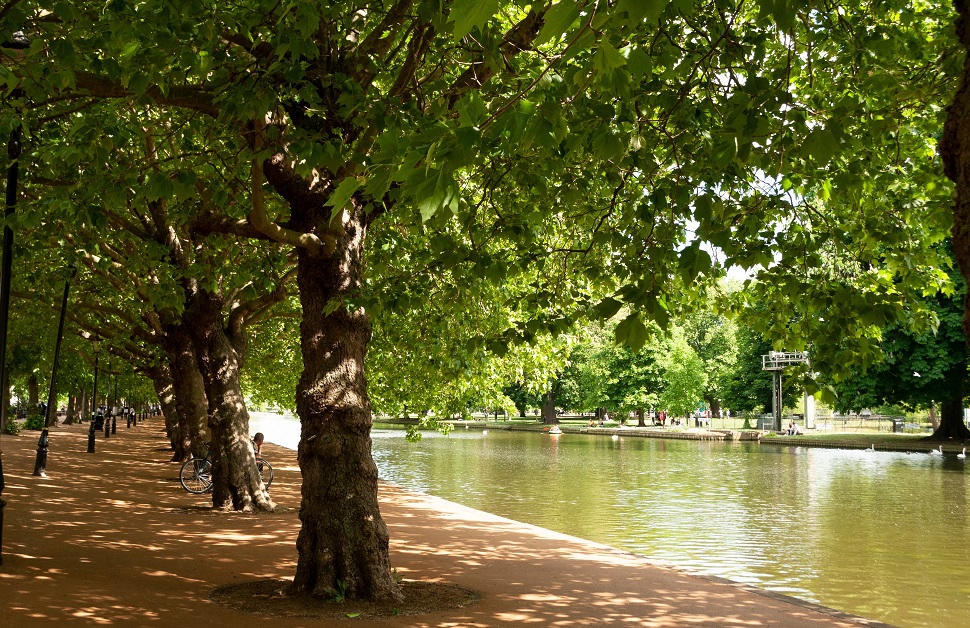Bedfordshire Trees, Woodland and Arboriculture
Situated in the East of England region, Bedfordshire is not only rural, but also primarily recognised for a number of old-growth forests including King’s Wood, Maulden Wood, Woburn Alley and Wrest Park. It is also one of the most densely populated counties in England, with the third highest population in the region, and the largest towns and cities by population including Leighton Buzzard, Dunstable, Biggleswade and Ampthill.
Despite being known for countryside areas and a strong standard of biodiversity, only an estimated 30% of Bedfordshire is considered rural. The low figure is primarily caused by the selection of towns, cities and villages all over the county. It does, however, capitalise when it comes to woodland, with 1,800 hectares of trees across the total 123,500 hectares of land.
Between 2000 and 2020, the local council and various community groups have worked in tandem to increase tree cover by 29%. Exercises in tree planting are ongoing in the county, with Central Bedfordshire Council, The Greensands Trust and the Forest of Marston Vale all encouraging residents to get involved with planting new trees in Bedfordshire providing it is done correctly and in line with strict protocol.
For the many wooded areas in the county of Bedfordshire, is it crucial that existing trees are protected from unnecessary disturbance. Development projects in the local area are likely to have an impact on trees, and for developers, it is important to ensure that they are avoiding any issues that would come from disrupting a tree under protection from the local council. Rather than running any risks and adding additional stress to the development process, it would be advisable to reach out to us for a tree survey on your site.

Legal Protection Over Trees
All of Bedfordshire, including Bedford and Luton, will be required to operate within applicable tree protections and follow rules regarding trees in any developments that could disturb them. In the majority of circumstances, local authorities will rely on two protective features when it comes to trees – Tree Preservation Orders (TPOs) and conservation areas.
A Tree Preservation Order (TPO) will apply to single trees, hedgerow trees and fruit trees on a development site, whereas a conservation area integrates all trees within a designated area. Other than that, both systems share the same values, affecting trees, managed by the local council, and requiring consent before any trees under either protection are interfered with in any way.
Authorities Serving Bedfordshire
- Bedford Borough Council
- Central Bedfordshire Council
- Luton Borough Council
- Mid Bedfordshire District Council
Surveying Trees
Using the professional tree management recommendations, insights and expertise of an arboriculturist, developers can remove any obstacles in their development plans caused by trees. The BS5837 tree survey is the starting point in the arboricultural assessment process, where a tree consultant will attend the development site in question and inspect all trees. Next steps for each tree can then be decided based on the condition and value of each tree, with the mitigation hierarchy playing a significant role in the outcome, as well as if trees will be affected or affect the planning project.
At the top of the mitigation hierarchy, retention of trees will always come as the priority outcome. Trees that are safe from the development plans and unscathed from the ravages of time, damage or high winds, for example, will be retained, and if trees are located within important parts of the development site but the plans can be changed, that will also prevent them from facing harm. If the plans cannot be changed, however, affected trees will need to be relocated or destroyed and compensated for with new trees, as will any trees that are in poor condition or likely to pose a hazard to health and safety.
When the BS5837 tree survey has been completed, a tree report will be put together by the arboricultural surveyor to reflect the tree survey process and conclusions that will ensure the continuation of the development project. Once handed to the local authority, tree reports from the tree surveys conducted on the site will influence the next stage of the planning pipeline, addressing any issues involving trees and supporting the application for planning permission.
Ask for a Tree Survey Quote
Protected trees on a development site can cause countless issues to a planning project, and it will be significantly more difficult to remedy any issues if it is late into the development process. As such, it would be advisable to reach out to us for a tree survey early, giving you an opportunity to determine whether or not you need one or any other tree services, and if you do, book in a professional tree survey with one of our arboriculturists at a time and date that suits your schedule.
Each and every one of our tree survey quotes is created using the specifications of each client’s site and project, guaranteeing a price to clients that is accurate to their needs, whether it is to deal with health and safety issues, a mortgage approval or the strict guidelines of the local authority. With that in mind, we would recommend that all clients reach out to us for a quote over the phone or online, and our team can then produce a free quote based on your details. After the inspection is complete, you will receive your tree report and be able to pass it on to your local planning authority as part of your planning application.